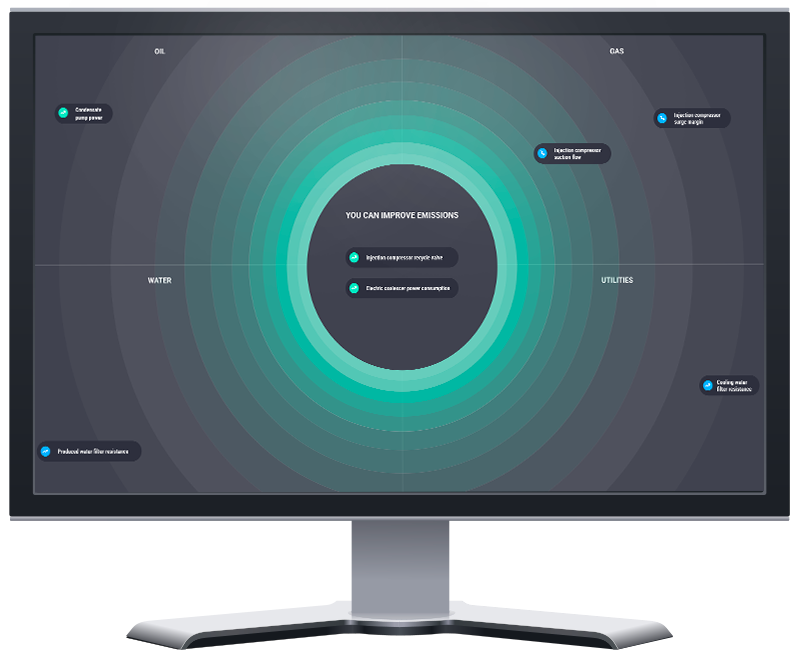Emissions Radar provides a visual view into how the asset/operations are managing the process - safely - from an emissions perspective.
The Emissions Radar offers operators real-time guidance on optimizing plant operations to minimize emissions. The radar screen highlights critical process areas such as oil, gas, water, and utilities, and identifies the variables that contribute to emissions or pose safety/production concerns. As these variables approach the center of the 'Radar', they warrant greater attention.You will see that the Radar screen also changes colour due to the level of concern (or threat), operationally, (green, yellow, red) based on standard operating procedures, emissions, or safety concerns.
A stream of real-time sensor data from the control and safety systems is used as input to a model where a set of (emissions) objectives are used to determine which parameters may be used to improve operability and to reduce emissions.
We require a prioritized list of the key equipment and process associated with the most emissions (WHRU, gas turbines, etc.) and those processes consuming the most power (and resulting hydrocarbon fuels sources - fuel gas, diesel, etc.) and from there we create your Emissions Radar for your asset(s), up-, mid-, or downstream - the approach is very similar.
Our team of subject matter experts will work with you to provide this solution in a time and cost effective solution that deliver ROI in weeks - not months or years.


Kairos Technology is a software company that develops innovative and disruptive technology within the energy industry.
Phone: +47 952 91 478
E-mail: info(a)kairostech.no
Address Norway:
Kanalsletta 4, N-4033 Stavanger
Address Denmark:
DTU Science Park, Diplomvej 381, DK-2800 Lyngby